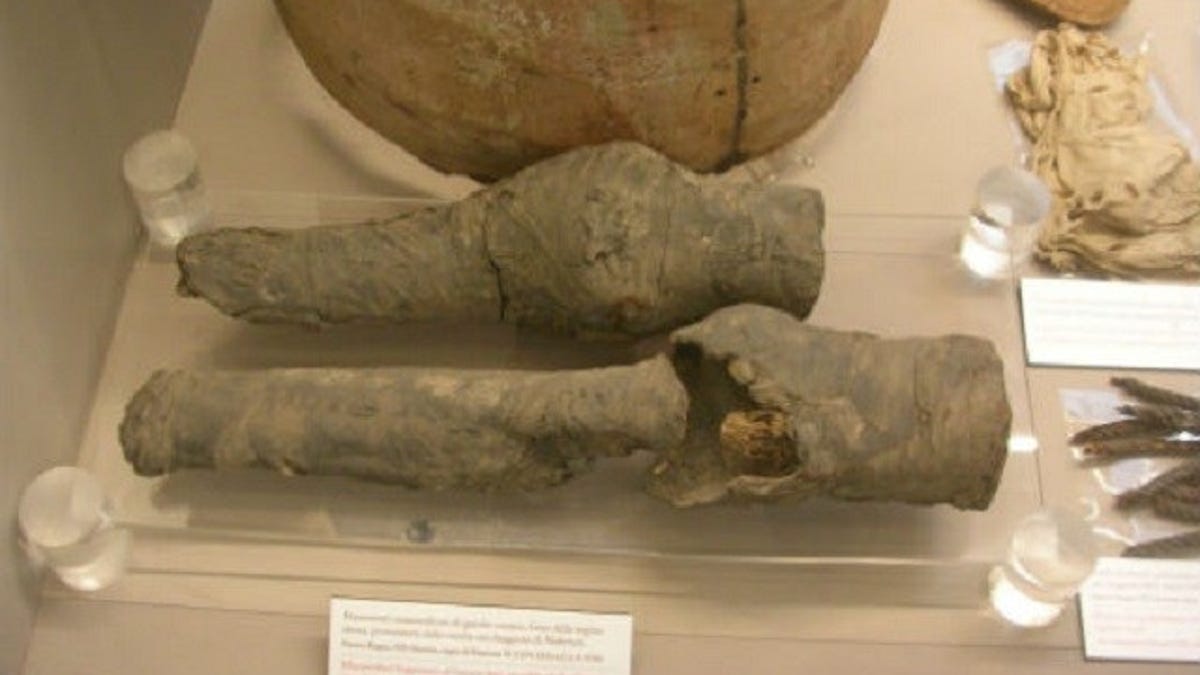Whose mummified knees are these? Queen Nefertari's, probably
Bone fragments thought to have belonged to the famous ancient Egyptian queen get the royal scientific treatment. You could say the findings have legs.

The queen's knees, most likely.
"She's got legs and she knows how to use them," ZZ Top famously sang. But just who's the "she" whose mummified legs are housed in an Italian museum?
A team of international scientists now say the gams likely belong to the ancient Egyptian Queen Nefertari, second wife of the pharaoh Ramses II. Nefertari, known for her active role in foreign politics, intelligence, beauty and position as Ramses II's favorite wife, is considered one of the most legendary queens of ancient Egypt.
Italian archaeologists first excavated the queen's elaborately decorated tomb in 1904, and found two fragmented but preserved mummified legs among a series of artifacts that had been plundered in antiquity. It's largely been assumed the pieces of tibia, femora and patella from more than 3,200 years ago belonged to the queen whose name translates to "beautiful companion." Still, they weren't scientifically investigated until now.
To identify the remains, the multidisciplinary team from the University of York, University of Zurich and University of Adelaide used radiocarbon dating, DNA analysis and chemical analysis of skin, muscle and embalming materials. They found these textiles to be consistent with mummification traditions from the 13th century BCE.
A detail from Queen Nefertari's spectacularly decorated tomb.
X-rays of the bones revealed some fascinating details, according to the results of the study published in the journal PLOS One.
For example, in the left knee, the researchers spotted what may be arteriosclerosis, a thickening and hardening of the artery walls that typically occurs in older age. That's one finding that led the researchers to conclude the bones belonged to an adult between 40 and 60. Historical records have Nefertari living until somewhere between 40 and 50.
The scientists advance other hypotheses for the legs' origins. One suggests remains from an earlier burial could have washed into the tomb by heavy rains and mudslides.
But the theory that the knees are Queen Nefertari's "seems to be the most credible and realistic and is coherent with the findings of the excavators and with the inscriptions found on the funerary objects," they say, while acknowledging that "no absolute certainty exists."
The knees can be seen at the Egyptian Museum of Turin, where they're on public display along with other artifacts, including sculptures, sandals and jewelry, found in Nefertari's tomb. Some of the formerly entombed objects are currently on loan to the Rijksmuseum van Oudheden in Leiden, Netherlands, where they'll be on display until April.
Queen Nefertari, of course, is not to be confused with another famous Egyptian queen, Nefertiti, whose remains have yet to be found.

